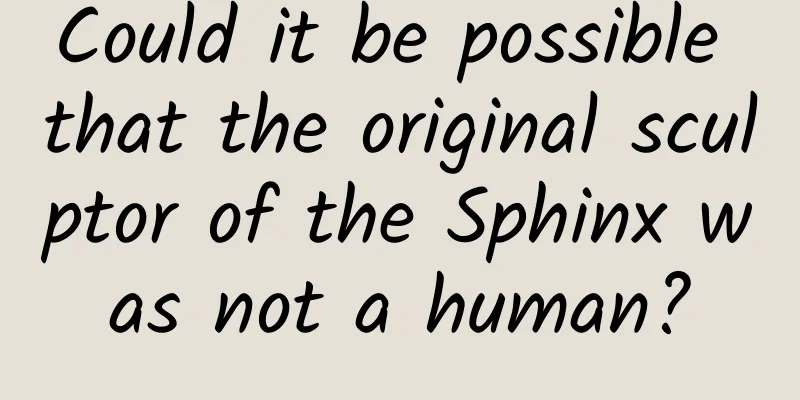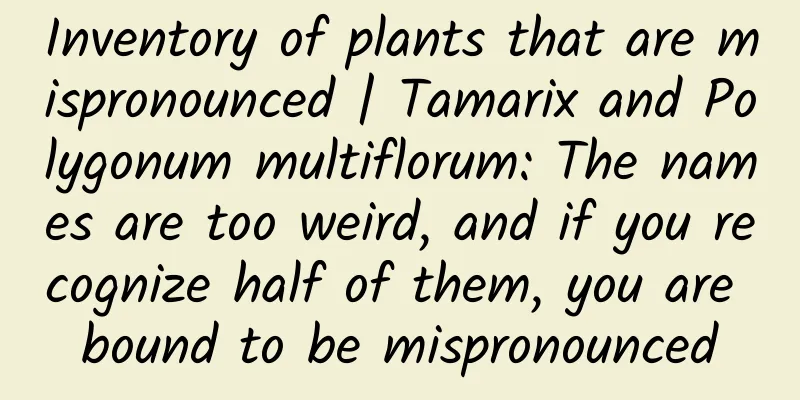The historical origin and implementation principle of CFArray

|
In iOS development, NSArray is a very important data structure. Especially in the data caching and updating in TableView, NSArray is used to cache data and modify the displayed data. In Core Foundation, CFArray and NSArray correspond to each other, which aroused the author's interest in the native data structure implementation in Core Foundation and Foundation libraries, so let's study it. CFArray History NSArray and CFArray are Toll-Free Bridged. In opensource.apple.com, CFArray is open source. This is more helpful for our study and research. When Garan no Dou was working on his personal tool library, he once studied the history and implementation of CFArray. You can refer to his excellent blog before reading this article. Array, an early document published in 2005, first introduced CFArray and tested its performance. It compared the performance of CFArray with that of the Vector container in STL. Since the implementation of the latter can be understood as an array encapsulation in C, most operations in the performance graph are linear. In the graph of CFArray, many differences can be found. From the above analysis, we can see that the efficiency of CFArray during head insertion and tail insertion is almost constant, while the operation on the middle elements will suddenly change from linear efficiency of small data to linear efficiency at a threshold, and this jump can't help but remind us of the data structure transformation of HashMap in Java 8. In the early days of ObjC, CFArray was implemented using a deque double-ended queue, so the head and tail operations were efficient, while the middle operations were linear. When the capacity exceeded about 300,000 (actually it should be 262140 = 2^18), the time complexity changed dramatically. In the source code, the threshold is defined by a macro as __CF_MAX_BUCKETS_PER_DEQUE. The specific code can be found in CF-550-CFArray.c (2011 version):
As you can see, when the data exceeds the threshold __CF_MAX_BUCKETS_PER_DEQUE, the data structure will be converted from CFArray to CFStorage. CFStorage is a balanced binary tree structure. In order to maintain the sequential access of the array, the weight of the Node is inserted and rotated using the subscript. The specific embodiment can be seen in the CFStorageInsertValues operation. The specific code can be found in CF-368.18-CFStorage.c. In the CF-635.15-CFArray.c version after 2011, CFArray canceled the data structure conversion function. Perhaps this feature was canceled to prevent the time jitter problem of binary tree construction when large data is used. Let's take a look at the description of the data structure directly:
From the name, we can see that CFArray is implemented by a single double-ended queue and records some container information. Some issues with C arrays An array in C language will open up a continuous memory space for data reading, writing and storage operations. In addition, arrays and pointers are not the same. There is a statement that is abused in many textbooks: a malloced memory space is equivalent to an array. This is wrong. The simplest explanation is that a pointer needs to apply for a pointer area to store (point to) the starting position of a space, while the array (head) is a direct access to the starting position of a space. In addition, if you want to know more, you can read the blog post Are pointers and arrays equivalent in C? The most significant disadvantage of arrays in C is that when inserting at index 0, all elements need to be moved (that is, the principle of the memmove() function). Similarly, when deleting the first element and inserting an element before the first element, it will also cause an operation with O(n) complexity. However, arrays are containers that are often read and written, so O(n) operations will cause serious time overhead. Some implementation details of CFArray in the current version In CF-855.17, we can see the implementation of the current version of CFArray. The document describes CFArray as follows: CFArray implements a compact container that can be accessed sequentially by pointers. Its values can be accessed through integer keys (index subscripts) ranging from 0 to N-1, where N is the number of values in the array. It is called compact because when the container deletes or inserts a value, no gaps are left in the memory space. The access order is still arranged according to the original key value size, so that the effective retrieval set range is always in the integer range [0, N-1]. Therefore, the subscript of a specific value may change as other elements are inserted into the array or deleted. There are two types of arrays: immutable, which means you can't add or remove elements from an array after it's created, and mutable, which means you can add or remove elements from it. A mutable array is limited in number (or limited only by constraints external to CFArray, such as the amount of available memory). As with all CoreFoundation collection types, arrays maintain strong references to their element objects. To further clarify the details of CFArray, let's analyze several operations of CFArray:
In the index subscript query operation, CFArray still inherits the property of the continuous address space of the traditional array, so its time can still be maintained at O(1) complexity, which is very efficient.
In the operation of inserting elements in CFArray, it can be clearly seen that this is an operation of inserting elements in a double-ended queue (dequeue), and it is a static implementation of a buffer nested map table that imitates the storage method of the C++ STL standard library. Use a schematic diagram to illustrate the data structure: In STL, deque uses a map table to record mapping relationships, while in Core Foundation, CFArray directly uses the second-order pointer _store to ensure such a secondary mapping relationship. In the operation of modifying elements, CFArray is also a bit violent. It first partitions the array into large blocks, then fills the data in order to form a new double-ended queue. For example, in the double-ended queue in the figure above, add an element with a value of 100 before the element with subscript 7: According to the index subscript, the specified part of the cache area will be found, taken out and reconstructed. During the construction process, it may be divided into three areas: A, B, and C. Area B is the modified part. Of course, if it is not enough, the system will expand the cache area by itself, that is, the memory allocation/release strategy officially provided by CFAllocatorRef. CFAllocatorRef is a strategy for allocating and releasing memory in Core Foundation. In most cases, you only need to use the default allocator kCFAllocatorDefault, which is equivalent to passing in a NULL parameter, which uses the so-called "regular method" of Core Foundation to allocate and release memory. This method may change, and we should not rely on any special behavior. There are few cases where special allocators are used. The following are the standard allocators and their functions given in the official documentation.
The last judgment in the _CFArrayReplaceValues method:
The number of buffers will be checked. If there are too many, the extra buffers will be released. This is because this method is universal and can be used not only in inserting elements, but also in adding (CFArrayAppendValue), replacing (CFArrayReplaceValues), and deleting (CFArrayRemoveValueAtIndex). Since the data structure is managed in blocks, the time is shared and the complexity is greatly reduced. Therefore, we can see that the time complexity of CFArray is at a high level in querying and adding elements. In the implementation of NSMutableArray, Apple uses CFArray to add expandable cache areas at both ends to solve the small memory characteristics of mobile terminals, which will cause a lot of waste. In the article "Unveiling the Principle of NSMutableArray", a reverse idea is used to explore the implementation principle of NSMutableArray. Its approach is to use a ring buffer to maximize the compression of the cache part. This is a solution proposed by Apple to address the limitations of mobile devices. References:
http://t.cn/Rxs9e2g
http://t.cn/RxsCzbj
http://t.cn/RxsCvcG
http://t.cn/RxsCho3 |
<<: Bluepill: LinkedIn's open source iOS parallel UI testing tool
>>: 11 Mobile App Development Trends in 2017
Recommend
Requirements for the placement of Wenchang Tower
1. The Wenchang Tower must be consecrated and ble...
The collapse of Bluegogo is a wake-up call: Which is more important, market share or user experience?
November 22 was supposed to be the first birthday...
Can fitting rooms become an important O2O scene in the clothing industry?
Regarding the Uniqlo nude photo scandal, as the f...
Anniversary event promotion example
Coinciding with the company's anniversary and...
How can a brand achieve channel transformation from 0 to 1?
There are many people around me who are working h...
The online marketing plan for Women’s Day is here!
along with With the rise of “her economy”, Women’...
CBC rule of holiday marketing: How to follow the hot topics of Mother’s Day and Children’s Day?
"Every time a festival comes, copywriters wo...
Three Elements of a Truly Intelligent Robot
I finally took some time out yesterday to finish ...
Some Android manufacturers kill background processes too aggressively, Google is investigating
Some Android OEM manufacturers' phones freque...
The official version of iOS 17.1.1 is released, these problems are finally fixed!
iOS 17.1.1 official version released This morning...
Analysis of the highly active community system of financial products!
As the cost of acquiring market traffic gradually...
Big data public opinion analysis: a comprehensive interpretation of "Wolf Warrior 2"
Last month, I went to the cinema and saw that Wol...
Asian Winter Games project literacy post: projects with similar names have such huge differences!
...
Summary of Android 7.0 Dynamic Permissions
In response to the company's project requirem...
How to plan an excellent event? Follow these 5 steps
Whether you are doing user operations, new media ...









